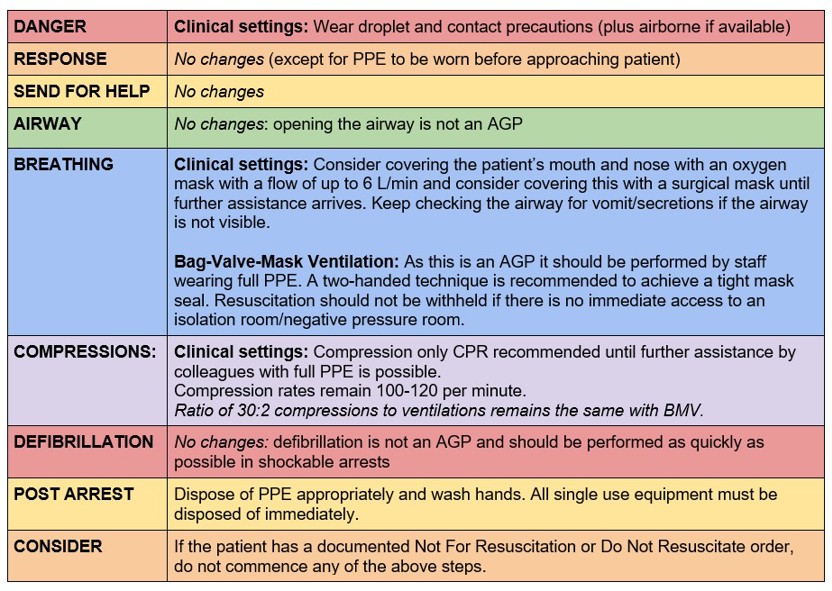Adult Basic Life Support during COVID-19
The National COVID-19 Clinical Evidence Taskforce has collaborated with the Infection Control Expert Group to develop new resuscitation guidelines that are regularly reviewed to reflect the best available evidence during the COVID-19 pandemic.
Their current guidelines reflect the risks associated with specific aspects of resuscitation, and have introduced a few changes to Basic Life Support (BLS) for adults. Changes pertaining to paediatric arrests have yet to be confirmed, as there is insufficient evidence to support compression only CPR in the paediatric population or other changes at this point in time.
Any local public health recommendations should be considered in regards to the risk of community COVID-19 infections, as this will vary across Australia.
The flowchart changes can be summarised as:

Links to the new guidelines can be found at:
If you are due to update your basic or advanced life support skills, we offer a range of adult and paediatric workshops to meet your ongoing clinical practice development needs. Further details of our workshops can be found on our website:
References:
Australian New Zealand Council on Resuscitation (ANZCOR). 2020. ARC Guidelines. www.resus.org.au (accessed 3/11/2020).
National COVID-19 Clinical Evidence Taskforce. 2020. Flowchart 6: CPR in Hospital. Version 1.0, October 2020 (accessed 3/11/2020).
National COVID-19 Clinical Evidence Taskforce. 2020. Flowchart 7: Preparedness for CPR. Version 1.0, October 2020 (accessed 3/11/2020).

Crystal Smith is a Senior Education Consultant for Critical Care Education Services (part of the Medcast Group). She has a clinical background in critical care, paediatrics and education.
Become a member and get unlimited access to 100s of hours of premium education.
Learn moreFollow James, a 7-year-old boy scheduled for a tonsillectomy and adenoidectomy, as we explore how the 4 P’s of child preparation – Prepare, Play, Parent, Praise – can be used in day surgery to reduce procedural anxiety, support family-centred care, and improve the overall patient experience
Caregiver concern is a powerful predictor of clinical deterioration in children, often surpassing abnormal vital signs. A recent Lancet study confirms its association with ICU admission and ventilation. Integrating caregiver input into assessments, documentation, and escalation protocols can significantly improve early recognition and outcomes in paediatric emergency care.
Sepsis is a time-critical medical emergency. The National Sepsis Program urges GPs and primary care clinicians to enhance early recognition and management of sepsis to save lives. This update outlines key actions and available resources to support timely diagnosis and intervention across primary care settings.
